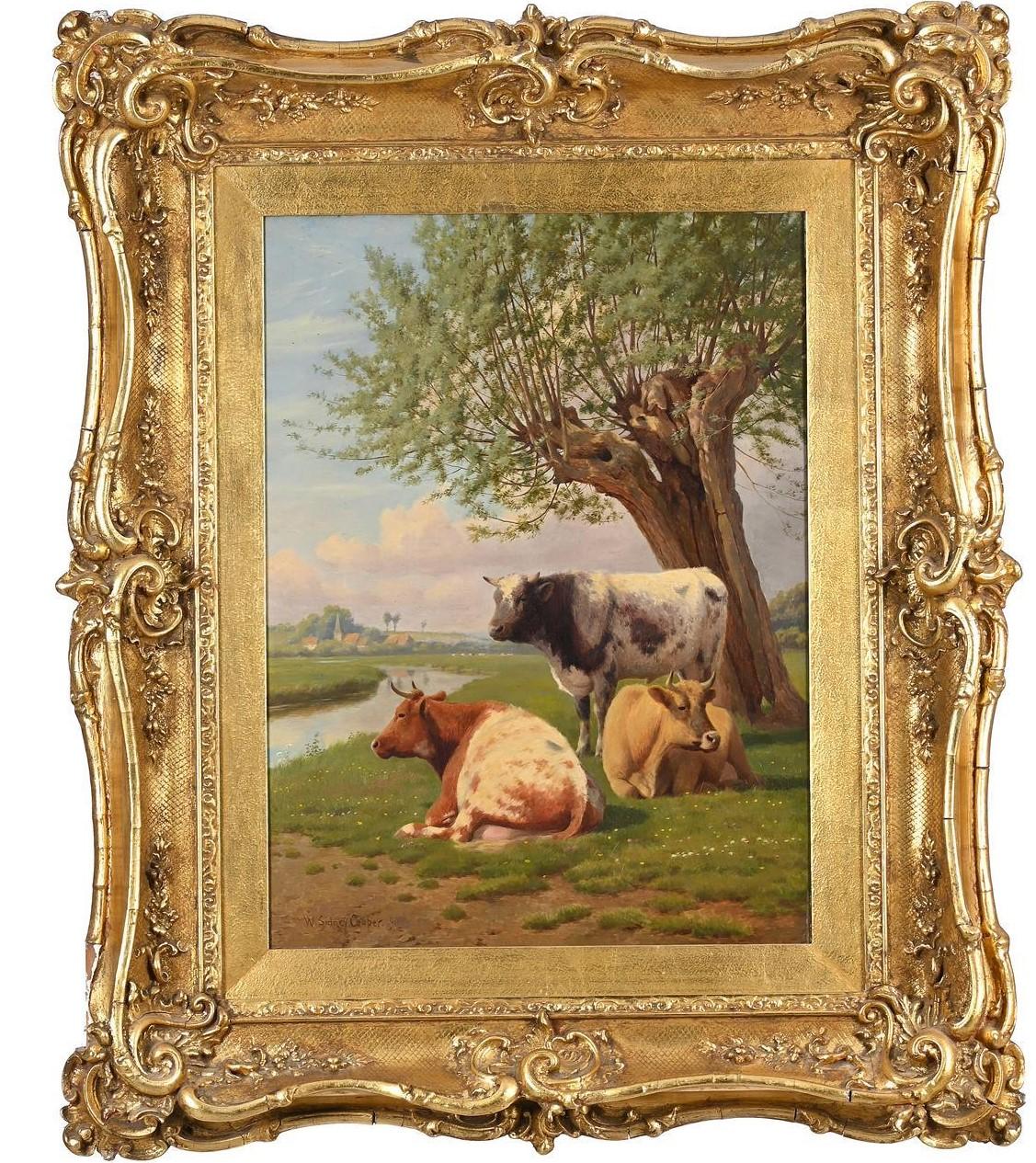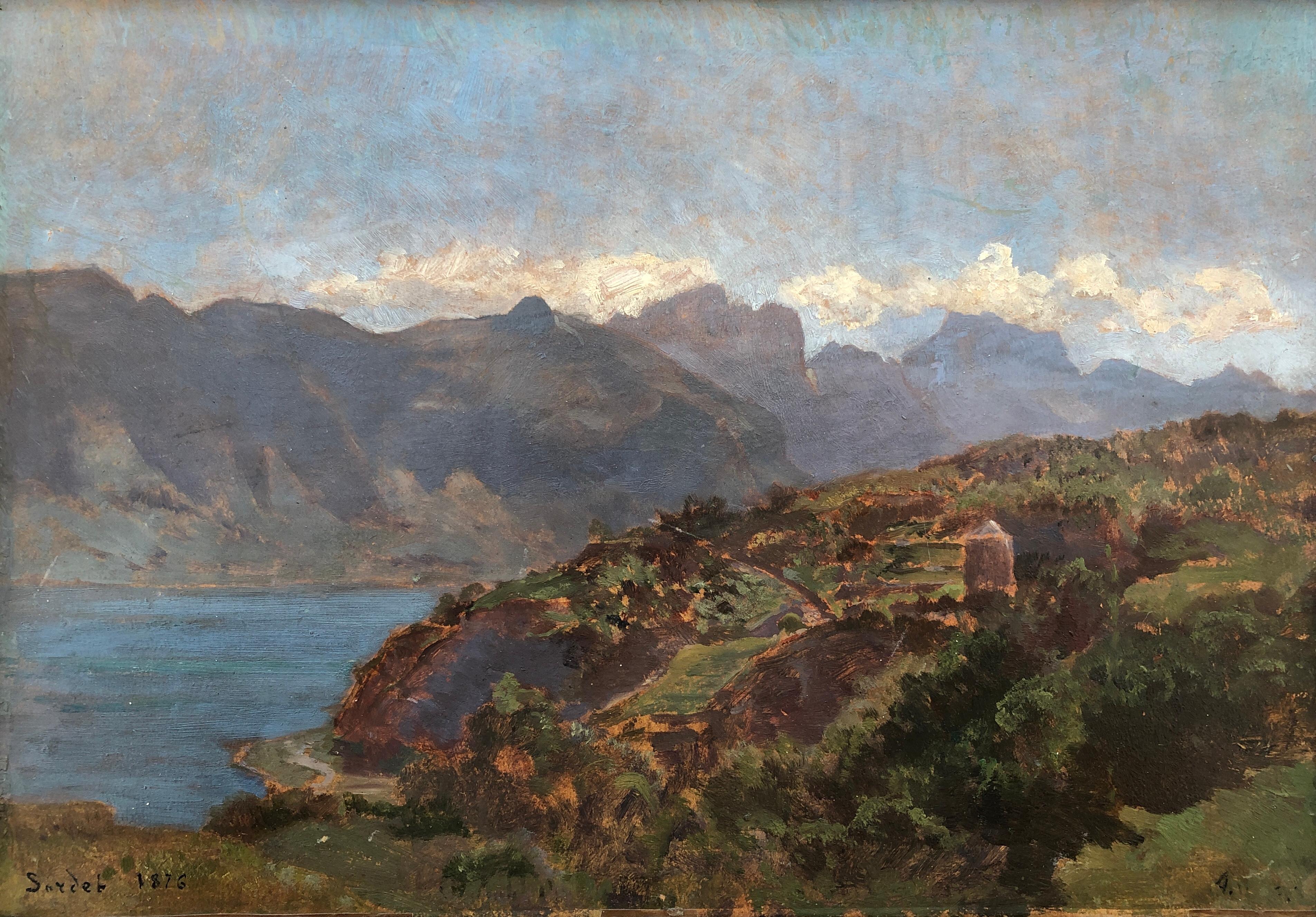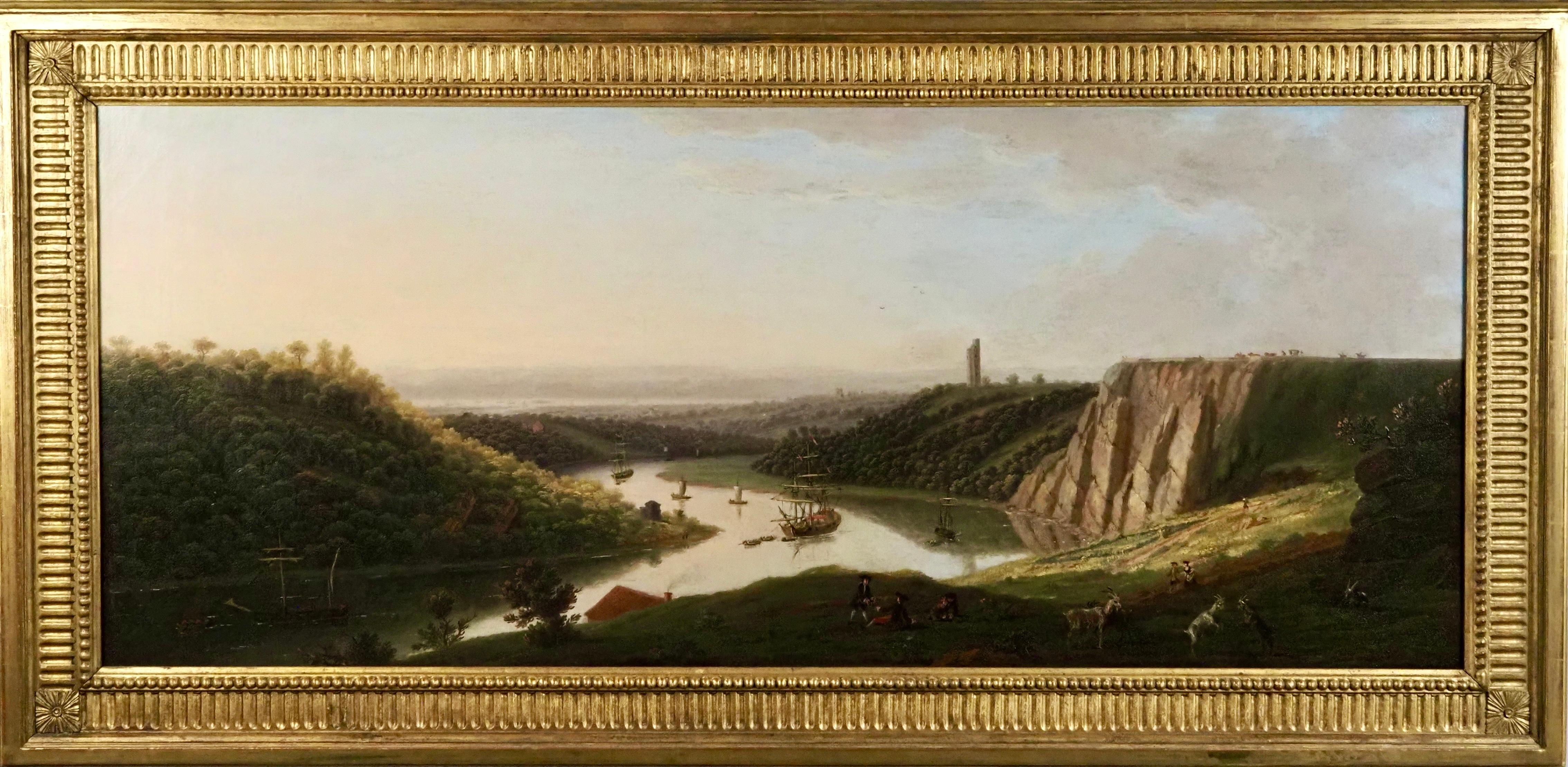Items Similar to Van Den Bossche Alexander The Great Paint Oil on canvas 17/18th Century Flemish
Want more images or videos?
Request additional images or videos from the seller
1 of 23
Van Den Bossche Alexander The Great Paint Oil on canvas 17/18th Century Flemish 1695-1721
1695-1721
About the Item
Balthasar Van Den Bossche (Antwerp, 1681 - 1715)
Alexander the Great and Campaspe in the studio of the painter Apelles
The canvas was exhibited in Perugia (Museo di Palazzo della Penna) at the exhibition "RENAISSANCE IN THE BOTTEGA: PERUGINO AMONG THE GREATS OF HISTORY" (29 October 2023 - 28 January 2024) - see photo details -.
Oil painting on canvas
120 x 162 cm. - In gilded frame 135 x 176 cm.
This fascinating painting, a real gem for any connoisseur and collector of old paintings, depicting Alexander the Great in the studio of the painter Apelles to view the portrait of his favourite concubine Campaspe, is a quality work by the Flemish artist Balthasar Van Den Bossche (Antwerp 1681 - 1715).
Born in Antwerp, he trained in the workshop of Gerard Thomas and was awarded the title of master in the Antwerp Guild as early as 1697. This was followed by a move to Paris, documented until 1700, where he founded his own studio, alternating his work as a painter with that of an art dealer. His combination of the elegance of the French style with Flemish characters brought him enormous success among Parisian collectors.
The collector's success of his creations was remarkable, obtaining the patronage of important personalities such as the Duke of Marlborough, his fervent patron. He finished his career in his home town, with a flourishing workshop, specialising in interior paintings of studios and picture galleries.
Our beautiful canvas, presumably executed at the turn of the century, is a fine example of his production, rich in detail and of great charm.
It depicts an episode recounted by Pliny the Elder in his work Naturalis Historia (Book xxxv, 85-87), written in 77 A.D., in which it is narrated that the illustrious painter Apelles, thanks to his enormous artistic talents, became the favourite of Alexander the Great, who called him to paint the portrait of Campaspe, the favourite among his concubines;
During the execution of the work, the painter fell madly in love with the young woman, who was therefore given to him by the leader as a form of thanks for his services. The anecdote of Apelles and Campaspe is often quoted and illustrated because it shows the high esteem of a ruler for his court painter, whose artistic ability is highly appreciated and who, therefore, occupies an important position in society.
As early as the 16th century, this subject was habitually included among the 'exempla virtutis' within celebratory decorations, as the act of handing over the young Campaspe to Apelles was considered an example of the magnanimity of Alexander the Great and thus reflected the moral qualities of the patron, who, thus compared to the valiant leader, implicitly acquired his gifts;
Let us now enter into the details of the composition, which sees the painter, seated in front of his easel, observing the beauty of the young woman posing and then portraying her features, and at his side Alexander in bright red Renaissance clothing, who looks critically at the painting to be completed.
The scene is animated by a small Cupid, hidden behind the easel, who is about to shoot his love arrow towards the painter.
In the central part the painter has inserted two animals, particular for their allegorical meanings and recalling the two male protagonists of the canvas: a monkey, tied by an iron ball, embodying carnal instincts and lust, with a dog at his side, alluding instead to loyalty and deep friendship.
Framing the scene, one cannot but be struck by the setting of the artist's large workshop, rich in details such as the classical sculptures, the numerous paintings that are already completed and the still life with precious objects near the young woman lying down.
The peculiarity of this type of work, typical of the old Flemish tradition, is precisely the precision and richness of detail with which the painter enriched his settings, destined for wealthy patrons. In such compositions, the taste for depicting opulent environments emerges, alluding to the social superiority but above all to the culture and passion for art of the wealthy patrons.
The painting is in an excellent state of preservation and is accompanied by an antique gilded frame.
The painting is sold with a certificate of authenticity and a descriptive iconographic card.
We take care of and organise the transport of the purchased works, both for Italy and abroad, through professional and insured carriers.
Contact us for any information, we will be happy to answer you.
- Attributed to:Balthasar Van Den Bossche (Antwerp, 1681 - 1715) (1681 - 1715)
- Creation Year:1695-1721
- Dimensions:Height: 53.15 in (135 cm)Width: 69.3 in (176 cm)
- Medium:
- Movement & Style:
- Period:
- Condition:
- Gallery Location:Riva del Garda, IT
- Reference Number:1stDibs: LU988113586192
About the Seller
4.8
Platinum Seller
These expertly vetted sellers are 1stDibs' most experienced sellers and are rated highest by our customers.
Established in 2017
1stDibs seller since 2018
205 sales on 1stDibs
Typical response time: <1 hour
- ShippingRetrieving quote...Ships From: Riva del Garda, Italy
- Return PolicyA return for this item may be initiated within 7 days of delivery.
More From This SellerView All
- Storm See Water Landscape Vernet 18th Century Paint Oil on canvas Old masterLocated in Riva del Garda, ITClaude-Joseph Vernet (Avignon, 1714 - Paris, 1789) workshop of The Storm on the Lighthouse 1750/60 Technique: Oil on canvas Dimensions: 48 x 67 cm / framed 77 x 93 cm We share a highly pleasing work, a splendid marine executed by a talented painter from the workshop of the Frenchman Claude-Joseph Vernet, depicting a coastal view set in a Mediterranean port with the sea still stormy. The focal point of the composition is the large lighthouse at the entrance to the port, which, due to the power of the sea, was unable to bring to safety the ship that had crashed against the rocks, while the silhouette of a second sailing ship can be glimpsed in the distance. The canvas shows in full the pictorial, chromatic and narrative characteristics of the great master Vernet's coastal landscapes, characterised by the inimitable atmospheric conditions always hovering between darkness and light, storm and calm, instilling the observer with contrasting feelings, made even more intense by a palette of vibrant and highly contrasting colours. A similar composition, from which our author must necessarily have drawn, also attributed to the workshop of Claude Joseph Vernet is to be found in France, in Nantes, at the Musée d'Arts.  The effects of the light create a visual drama in the contrast between the darkness of the rain-laden storm clouds and the gash of clear sky that is opening up, pierced by the timid rays of light. The real magic of the painting is the painter's highly personal use of light and colour, with chiaroscuro effects that accentuate its three-dimensionality and movement. The compositional typology, as well as the quality of execution and attention to detail we are dealing with, are typical elements of the 'prototypes' conceived by the master, later taken up around the middle of the 18th century by his best pupils. Similar versions can be found in the most important international museums and private collections, belonging to a large series of paintings that the master created, together with his collaborators, during his stay in Italy. Vernet lived in Rome for twenty years (1734 - 1753), becoming particularly popular with English aristocrats who stopped there on their Grand Tour. International fame followed him from Rome to France, and to his English and French clients he added German princes...Category
18th Century Old Masters Paintings
MaterialsOil
- Christ Jesus Lama Religious Paint Oil on canvas 17/18 th Century Old masterLocated in Riva del Garda, ITGiovan Battista Lama (Naples, 1673 - 1748) workshop Exaltation of the Holy Cross with the Symbols of the Passion oil on canvas 84 x 135 cm. - with frame 98 x 148 cm. The proposed p...Category
17th Century Old Masters Paintings
MaterialsOil
- Allegory Triumph Of Art Over Time De Visch Paint 18th Century Oil on canvas ArtLocated in Riva del Garda, ITMatthias de Visch (La Reninge, 1701 - Bruges, 1765) Signed and dated on the edge of the globe: M. De Visch 1739. Allegory of the triumph of Art over Time (Music and Astrology that c...Category
18th Century Old Masters Paintings
MaterialsOil
- Battle Horsemen Landscape Graziani Paint Oil on canvas 17th Century Old masterLocated in Riva del Garda, ITFrancesco Graziani, known as Ciccio Napoletano (active in Naples and Rome in the second half of the 17th century) Battle with clash of horsemen Oil on canvas 95 x 130 cm In period ...Category
17th Century Old Masters Paintings
MaterialsOil
- Temptations St. Anthony Teniers II Paint 17th Century Oil on canvas FlemishLocated in Riva del Garda, ITDavid Teniers II, the Younger(Antwerp, 1610 - Brussels, 1690) Workshop of The Temptations of St. Anthony Abbot Oil on canvas 61 x 90 cm. - Framed 95 x 125 cm. The evocative theme o...Category
17th Century Old Masters Paintings
MaterialsOil
- Winter Landscape Foschi Paint 18th CEntury Paint Oil on canvas Old master ItalyLocated in Riva del Garda, ITFrancesco Foschi (Ancona, 1710 - Rome, 1780) Attributable Winter landscape Oil on canvas 76 x 63 cm. - In frame 87 x 75 cm. The compositional and stylistic elements of this pleasan...Category
18th Century Old Masters Paintings
MaterialsOil
You May Also Like
- William sidney cooper, Cows by a river 19th century landscape oilBy William Sidney CooperLocated in York, GBA fine framed oil on canvas painting by the renowned artist William Sidney coope.Signed and dated 91 lower left. This painting depicts 3 cows resting by a river, a village with hous...Category
19th Century Old Masters Landscape Paintings
MaterialsOil
- Lake Annecy, the TournetteLocated in Genève, GEWork on cardboard Golden wooden frame 35.5 x 49 x 2 cmCategory
1870s Old Masters Landscape Paintings
MaterialsOil
- Attributed to John Riley, 17th century English portrait of a girl on a terraceBy John RileyLocated in Bath, SomersetPortrait of a young girl, full-length, wearing a blue silk gown, standing on a terrace beside a classical urn holding a branch with blossom. Attributed to John Riley...Category
17th Century Old Masters Portrait Paintings
MaterialsOil, Canvas
- View of Shipping on the River Avon from Durdham Down, near BristolLocated in Stoke, HampshireThomas Smith of Derby (c. 1710-1767) View of Shipping on the River Avon from Durdham Down, near Bristol, 1756 Oil on canvas Canvas size - 20 x 47 in Framed size - 26 x 53 in Provena...Category
18th Century Old Masters Landscape Paintings
MaterialsOil
- Huge Old Master Oil Painting 17th century Diana & Cupids in Panoramic LandscapeLocated in Cirencester, GloucestershireDiana The Huntress and her Cherubs Northern European artist, circa 1680's period oil on canvas, unframed canvas: 20 x 60.5 inches provenance: private collection, UK condition: some p...Category
17th Century Old Masters Figurative Paintings
MaterialsOil
- Washerwoman and boat at the water's edgeBy Samuel BoughLocated in Genève, GEWork on wood Molded frame in plaster and gilded wood 37 x 46.5 x 5.5 cmCategory
1850s Old Masters Landscape Paintings
MaterialsOil
Recently Viewed
View AllMore Ways To Browse
Great Masters Art
Great Masters Painting
The Den
17 Century Painting
Antique Art Creation
Antwerp Art
28 Century Oil Paint
Oil Paintings 17 Century
Flemish Paintings
Antwerp Painting
Antique Painted Picture Frames
Connoisseur Fine Art
Alexander The Great
Old Paintings 17 Century
Fine Art Parisian Painting
Arrow Painting
Old Master Painting Flemish
Real Antique Frames




